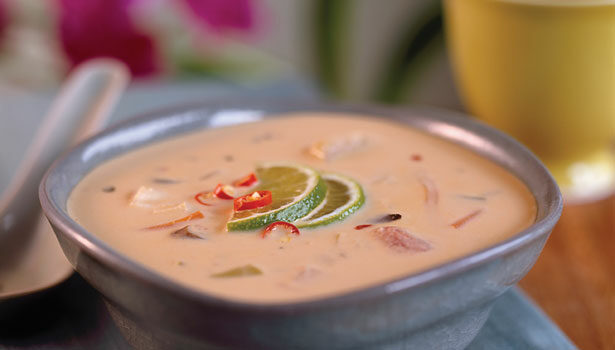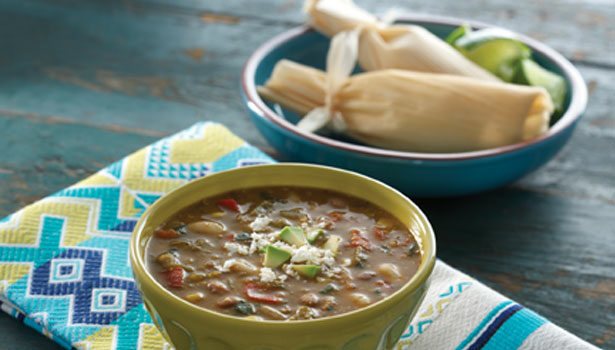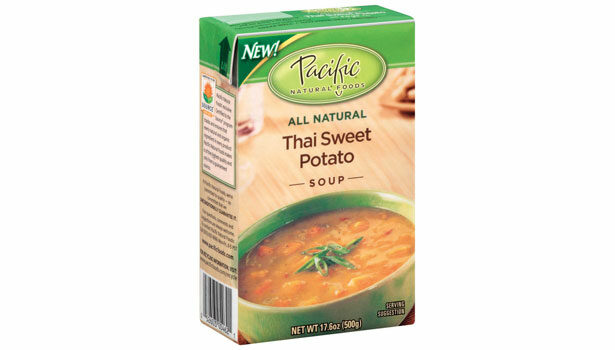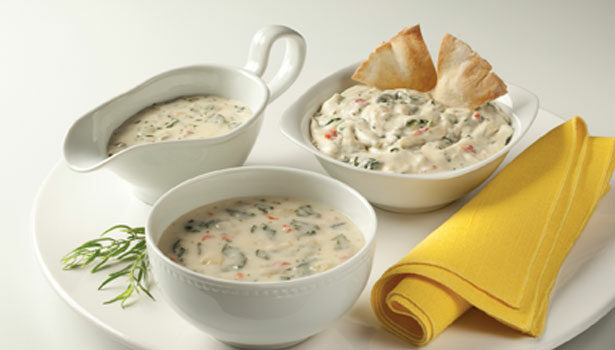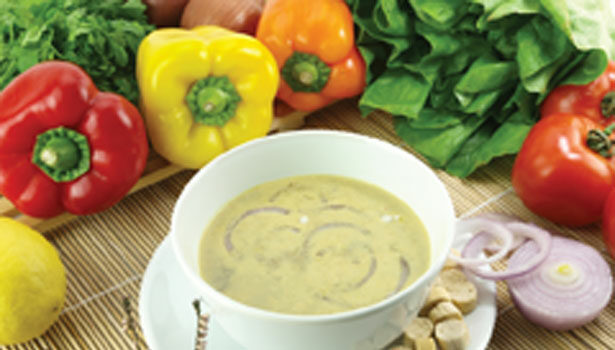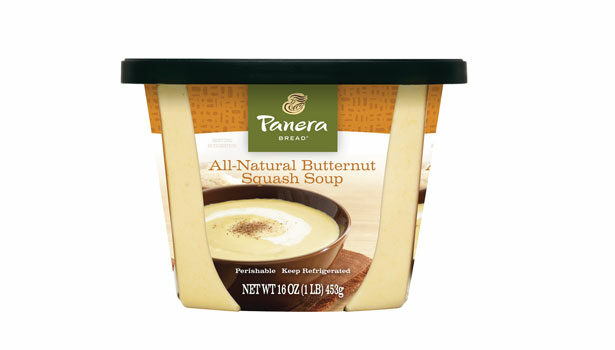Soup has survived through the ages in many different forms and flavors; just about every country and culture has its traditional soups. Local ingredients and seasonal availability have a big influence on the flavor and type of soup prepared. In modern times, soup has gone through many periods of varying popularity. According to most trend research groups, soups and stews (including chili) are making a significant comeback, especially in the past three years. Sales in this category are expected to increase at an approximately 25% growth rate above the current $5.5 billion U.S. market.
Chili, especially, has achieved new heights on most restaurant menus across the country and abroad. Most non-ethnic restaurants, including QSRs and casual chains, are offering more than one chili, such as a regular red chili and a white chili variety. According to Technomic, chili has surpassed soup-of-the-day offerings to become the leading category variety at limited-service restaurants (LSRs) and second at full-service establishments.
The biggest influence, as with most returning or new trends in foods, has to do with the development of flavors. Ethnic flavors, ingredients and cooking methods are big drivers contributing to the recent popularity of the soup category. An ongoing exposure to global flavors and ingredients is a direct result of consumers’ increasing travel habits. So, too, health is an important and vital driving force. Soup always has been considered a “healthful” lunch or appetizer. Consumers are more willing to part with a little more money for an item that is flavorful and healthy.
New production and packaging technologies also have helped stimulate soup sales. Shelf-stable packaging, microwavable bowls, clear glass containers and even frozen soup “cubes” are preserving flavor and color—while opening up different avenues throughout the store to entice consumers with a warm bowl of soup or stew.
Creating Flavorful Soup
Combining inviting, rich flavor and comfort along with healthy ingredients—all in the same pot—presents a specific challenge. Formulators have to avoid the pitfall of removing critical characteristics consumers seek in a soup. Some pertinent questions include: What are the desired final flavor notes? Is there to be a high or low percentage of particulate? Is there spiciness, and at what level? Is this a reduced-, lower- or low-sodium formulation? Moreover, it is critical to define the cost parameters up front in order to have a successful project.
A detailed description of the type of soup is probably one of the most important factors for developers to address at the onset of a project. Will it be broth- or cream-based; thick or thin? Will it build on chicken or beef stock or be tomato- or other vegetable-based? Once these criteria are decided, then the background—the “base”—of the soup must be determined. Soup bases are, for the most part, the driving force behind the type of finished soup. They can add subtle or intense background flavors. Also, the type of operation will dictate the form of stock needed for sourcing. Choices can include scratch-made, frozen or dry broths, or concentrates. Multiple soup base and flavor suppliers are on hand to help formulators choose the right base format. Even more convenient, entrepreneurial suppliers are available to provide custom-designed stock bases and other soup ingredients.
The increased use of ethnic ingredients to make authentic global flavors is essential to satisfying today’s more sophisticated and worldly consumer. While not a new trend, the marketing of soups by their specific origins from around the globe, and the highlighting of local ingredients used, continues to have a strong marketing impact.
However, specificity is needed: “Asian” is no longer trendy enough—“Thai coconut” or “Lebanese lentil” or “Brazilian fish stew” are the hooks to which consumers are drawn. And, when it comes to flavor intensity, what was considered spicy just a few years ago is no longer “hot enough.” When creating Latin or Mexican soups, it pays to call out the chili peppers used by name, such as guajillo, Aleppo or aji amarillo.
Concentrated flavors, used to increase taste appeal or to reduce cost, have evolved greatly over the past few years. It was once believed—and often proved true—that flavors were expensive. Today, cost-in-use is the single most important criterion after final product taste when using flavors in the development of soups. This factor has been greatly reduced or controlled. Product developers now can, with a little research and creativity, mix and match.
Culinary cooking methods and the diverse flavors imparted by them are directly related to the consumer’s soup experience and ultimate satisfaction. In most commercial kettles, it is difficult to attain the intense browning (Maillard reaction) that can be achieved over direct heat. Creative product developers must use their skills and knowledge to source and combine bases and flavors that will produce such desired flavor nuances as sautéed, baked or roasted notes. This is where the combination of culinary art and food technology offers the highest probability of success. For example, using flavor technology, such as a caramelized onion flavor, it’s possible to create a French onion soup that tastes as if the onions were actually browned in the kettle at the beginning of the cooking process.
Thicker, richer soups with more particulate solids are being created to serve as a stand-alone meal. The Original SoupMan Inc., New York, has included, in its retail line, soups specifically designed to function as a meal served with sides—such as bread or fruit (and even chocolate).
Soup used as a component in a “bowl” concept is very popular. The soup is ladled over rice or pasta and served as a meal. One premier example is Asian noodle bowls. These soups’ popularity is on the rise, following the appearance of many “noodle bowl” concepts in restaurants across the country. Vietnamese phô is one such example. Phô (pronounced “pha”), is a rich, long-simmered broth influenced by French culinary techniques. Traditionally, it was beef or chicken broth, but today one can find seafood and vegetable varieties, as well.
Improved Technologies
Kettle-cooking equipment technology has improved greatly during the past 20-30 years. Kettle-cooked operations are those that cook soup in a stainless kettle or vessel. The soup then is transferred to a package by either manual or mechanical methods. There is a broad selection of kettles, with one popular option being kettles with newly designed agitators that are much gentler on particulates, allowing for increased amounts of consumer-favored solid ingredients, such as cut meats and vegetables. They also help these solids stay suspended in the broth during processing.
Other ingredient technologies also have improved greatly in the past decade. While a lot of formulators are using fresh meats and vegetables due to the “made fresh” demand, individually quick-frozen (IQF) meats and vegetables are a great alternative. The quality and variety have increased and, in most cases, can lower final cost. There are many more varied cut sizes of IQF vegetables from which to choose and, if a supplier does not have a certain cut of IQF vegetable needed, custom preparations are available.
Soup is Heating Up
In order to capitalize on the increased appeal of soup and salad while meeting evolving consumer needs with regard to foodservice spending and overall value, Technomic developed its 2012 “Left Side of the Menu: Soup & Salad Consumer Trend Report.” Here are some excerpts from that report. To order the entire study, contact Technomic at www.technomic.com.
Retail soups appeal to consumers as an easy, convenient at-home meal. Four in 10 consumers eat soup at home at least once a week; consumption is highest among consumers aged 25–34 and 45–54. Women gravitate to soup as a light, healthy option, while more men opt for soup because it provides a good overall value. The established perception of soup mainly as an appetizer at dinner is changing. Consumers increasingly opt for soup at lunch and order it as an entrée.
More consumers now see soup as an appropriate option for a main meal; three in five consumers say soup makes a good main meal at lunch, and a near majority of consumers think soup makes a good dinner entrée. Operators and suppliers can develop soups that can stand alone as an entrée by integrating filling ingredients and proteins to make soups more substantial and by offering complex flavor profiles to satisfy consumer cravings.
Since 2009, there’s been an increasing perception of soup as a healthy option and an offering that can elevate one’s mood. About two in five consumers say they feel healthier and in a better mood after eating meals that include soup. Health claims that point out the positive nutritional elements of soup,―such as “high in protein” and “heart healthy,”―resonate more strongly with consumers than those noting a lack of unhealthy components. However, soups containing a full serving of vegetables and all-natural, seasonal or local ingredients are most appealing. Such claims can be used by operators and suppliers to convey health and wellness. They enhance, rather than detract from, a soup’s perceived taste, flavor and freshness.
Forty percent of consumers agree that restaurants do a good job offering healthy options, up from just a quarter of respondents asked in 2009. While this marks improvement, many consumers are still not fully satisfied with the availability of healthy soups. This signals room for more healthy offerings. As healthy soups become more common, there will be a need for operators to differentiate their better-for-you offerings. Consumers report high interest in new and unique soup flavors and increasingly agree that spicy and ethnic options are appealing avenues for differentiation.
Consumers enjoy a wide range of soup varieties and name broth-based soups, stews, chowder and chili as the leading options. Although creamy soups ranked as consumers’ least-favorite type of soup, two options typically served with a cream base,―potato and broccoli,―rank among consumers’ top five favorite soups—along with chicken noodle, chili and beef stew.
Chicken is, by far, consumers’ most-preferred soup protein, particularly among women, who likely opt for this ingredient as a healthy alternative. However, high consumer demand also exists for vegetarian soup; about half of consumers say restaurants should offer at least one vegetarian option. Although pasta is the most preferred grain to add to soups, a number of other options are also appealing, suggesting grains such as brown or wild rice can be used to position soup as unique, healthy or premium.
In restaurants, soup-of-the-day listings may have led all other appetizer-soup varieties at LSRs in 2009, but chili is the category to watch. Chili has exhibited growth since 2009, increasing from 39 items at 29 chains to 50 items at 39 chains. Chili has now surpassed soup-of-the-day options as the leading LSR soup offering. Chili’s growth continues in the full-service restaurant (FSR) segment, where the total number of items has increased slightly (by four items, to 74 total offerings) since 2009. Other trends to watch include the growing prevalence of ethnic-style appetizer soups, particularly those with an Asian spin.
Along with chili’s expansion on LSR menus comes the prevalence of the smoky, spicy profiles that contribute to this soup’s flavor. Other top flavors include tomato, onion, Cheddar and basil. Similar to the LSR segment, spicy flavors also stand out on FSR soup menus. Other leading profiles call for heat-tinged jalapeño flavors and Italian-style (and, increasingly, Thai-style) basil accents.
The most traditional soup proteins—chicken, beef and clam—are leaders on LSR menus. Under the surface, emerging premium proteins include Angus beef, lobster, shrimp and crab. Chicken leads all other FSR soup proteins by a clear margin, yet it shares space on the menu with an array of seafood proteins—particularly clam, lobster, shrimp and crab. At LSRs, broccoli, vegetable, cheese and tortilla are leading soup ingredients. Often, these leading ingredients combine in popular preparations, such as broccoli-cheese.
Cheese, vegetable, tortilla and potato ingredients are the most frequently menued components for FSR soups. The widespread presence of tortilla illustrates the acceptance of Mexican-style soups, regardless of segment or type of restaurant. To highlight craveable new tastes—and underscore menu differentiation—look for more operators to begin experimenting with unique global flavors and ingredients for soups.
From Technomic’s 2012 “Left Side of the Menu Consumer Trend Report,” Technomic Inc.
NRA Honors Versatile New Heinz Product
Chefs and foodservice operators honored Heinz Foodservice with one of the National Restaurant Association’s (NRA) coveted 2012 Food and Beverage Product Innovation Awards. Specifically, professional judges recognized the Chef Francisco line by H.J. Heinz Co.’s 3-in-1 Soup, Sauce and Dip platform.
Heinz says its unique frozen product offers chefs three reconstitution methods: an appetizing soup when reconstituted with water; a savory sauce when reconstituted with whole milk; or a dip when reconstituted with sour cream.
“Whether the goal is to craft an individual culinary creation, customize daily offerings, stay current with taste trends or serve a convenient, high-quality prepared soup at a great value, Heinz Soups are designed to fit any menu,” said Brian Sullivan, senior brand manager for Heinz Foodservice Frozen Soups. “Chefs can save time and money in the kitchen by using Heinz Soups as a base to eliminate recipe guesswork and maintain consistency within each batch.”
The line includes 10 varieties with two more offerings added this June: Buffalo Chicken and a Queso Soup with Guajillo Chiles. Heinz Foodservice says it offers a variety of ready-to-heat, frozen concentrated and canned soups, under the Chef Francisco line by Heinz, TrueSoups by Heinz, Heinz Smart & Savory Soups and Quality Chef brands.
Salt Out, Flavor In
Monosodium glutamate (MSG) and sodium chloride—salt—have been mainstays of soup mixes and prepared soups for decades. And, while the controversies surrounding these two key ingredients have yet to be resolved, there are some channels in which consumers demand low-sodium, MSG-free formulations. This can present a challenge to developers desiring a strong umami note in the product. Ingredient makers have found ways to enhance the flavor through other natural sources. For example, concentrated liquids, powders and extracts of tomato have been employed with great success. In some formats, such naturally derived enhancers can replace MSG entirely, reduce salt and boost flavor—without imparting other flavors. Other advantages of such flavor systems include providing a more “rounded” taste in the final product, with a longer finish.
